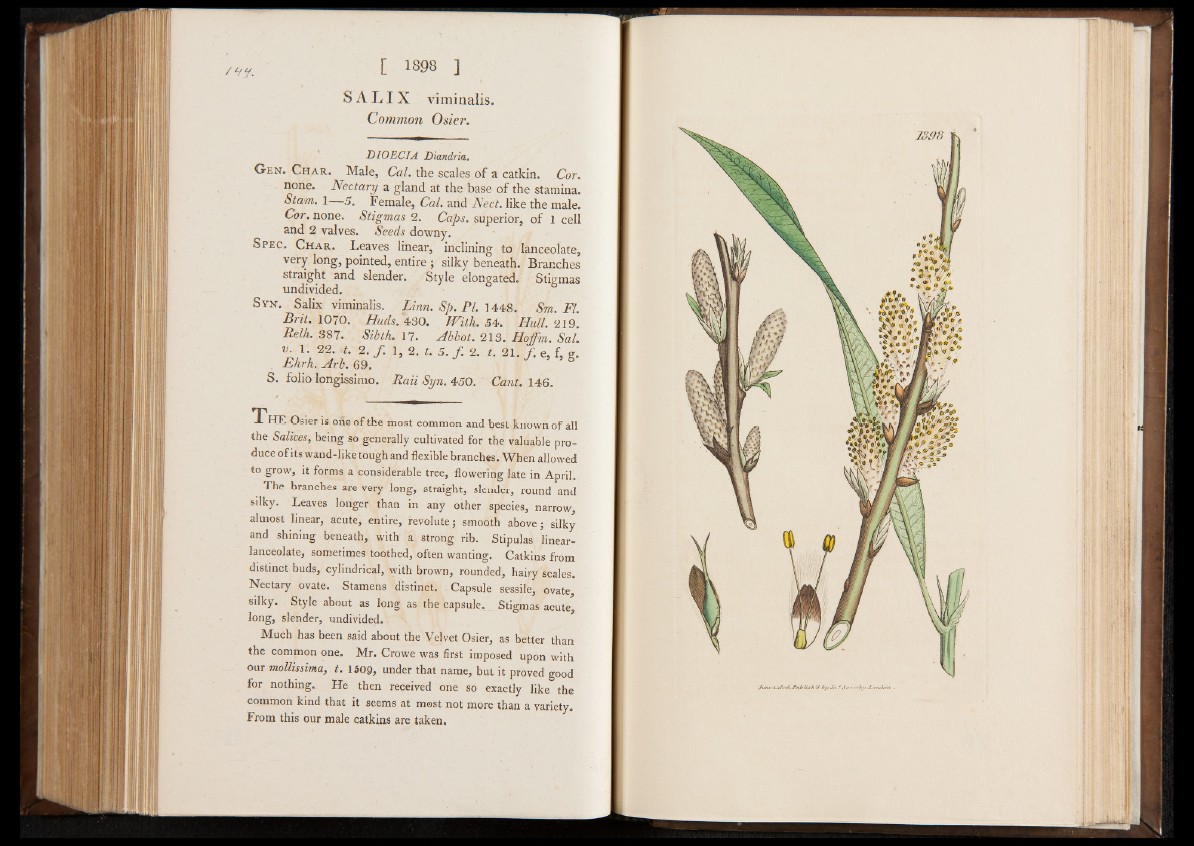
/ v y . [ 1898 ]
S A L I X viminalis.
Common, Osier.
DIOECIA Diandria.
G en. Char. Male, Cal. the scales of a catkin. Cor.
none. Nectary a gland at the base of the stamina.
St am. 1 5. Female, Cal. and Nect. like the male.
Cor. none. Stigmas 2. Caps, superior, of 1 cell
and 2 valves. Seeds downy.
S pec. Char. Leaves linear, inclining to lanceolate,
very long, pointed, entire ; silky beneath. Branches
straight and slender. Style elongated. Stigmas
undivided.
Syn. Salix viminalis. Linn. Sp. PI. 1448. Sm. FI.
B rit. 1 0 7 0 . Huds. 430. With. 5 4 . Hull. 219.
Relh. 387. Sibth. 17. Abbot. 213. Hoffm. Sal.
22J f t f ' % 2 ' 4 Ehrh. Arb. 69. 5-fi 2 - *1 / • e > f > s -
S. folio longissimo. Rail Syn. 450. Cant. 146.
x H E Osier is one of the most common and best known of all
the Salices, being so generally cultivated for the valuable produce
of its wand-like tough and flexible branches. When allowed
to grow, it forms a considerable tree, flowering late in April.
The branches are very long, straight, slender, round and
silky. Leaves longer than in any other species, narrow,
almost linear, acute, entire, fevolute; smooth above; silky
and shining beneath, with a strong rib. Stipulas linear-
lanceolate, sometimes toothed, often wanting. Catkins from
distinct buds, cylindrical, with brown, rounded, hairy scales.
Nectary ovate. Stamens distinct. Capsule sessile, ovate,
silky. Style about as long as the capsule. Stigmas acute,
long, slender, undivided.
Much has been said about the Velvet Osier, as better than
the common one. Mr. Crowe was first imposed upon with
our mollissima, t. 1509, under that name, but it proved good
for nothing. He then received one so exactly like the
common kind that it seems at most not more than a variety.
From this our male catkins are taken.
J u n e x j.S o S .J tib ILsh'A fry Jin f Atm- ei'tos JOtnulcm .